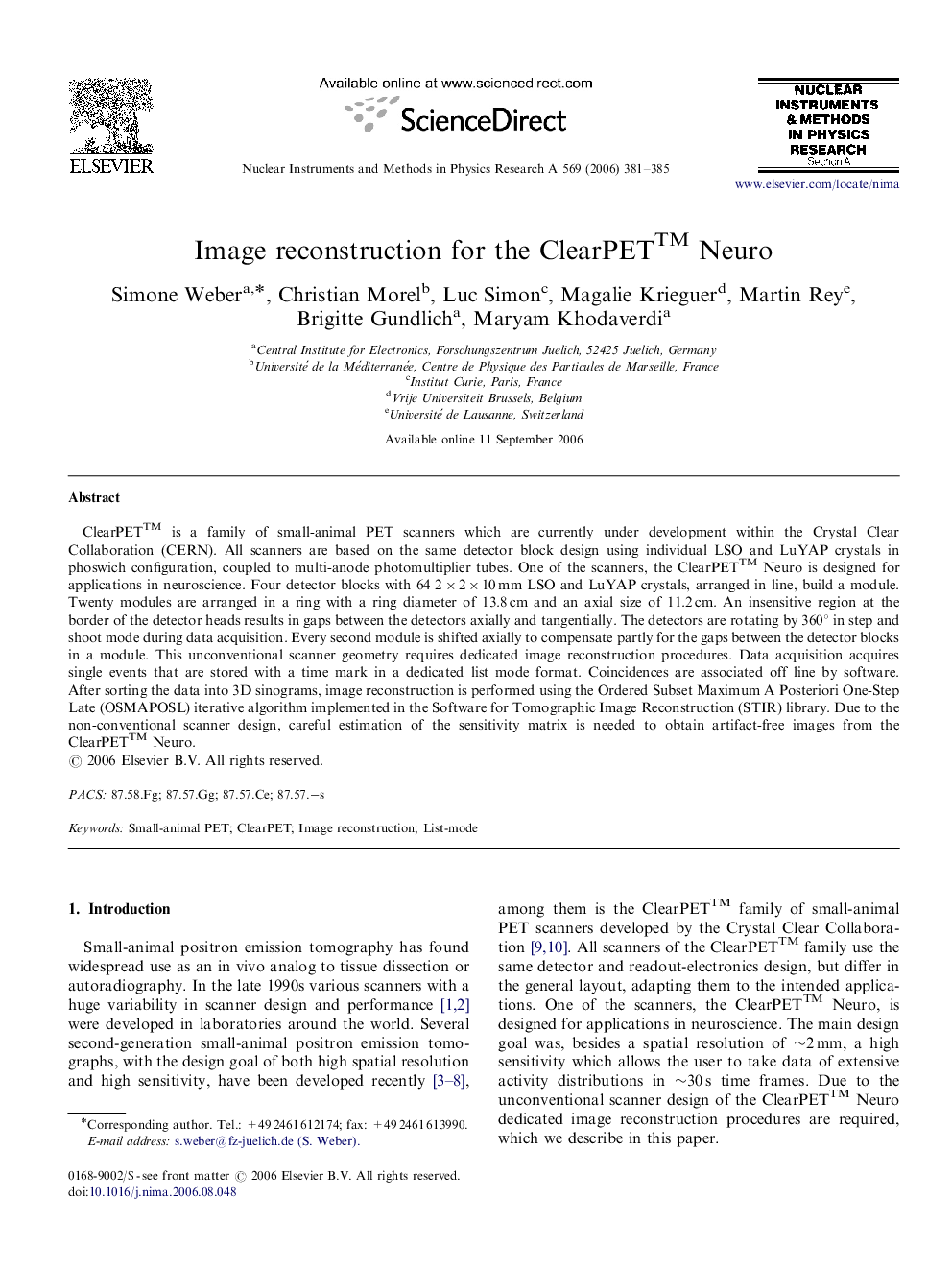| Article ID | Journal | Published Year | Pages | File Type |
|---|---|---|---|---|
| 1832339 | Nuclear Instruments and Methods in Physics Research Section A: Accelerators, Spectrometers, Detectors and Associated Equipment | 2006 | 5 Pages |
Abstract
ClearPET⢠is a family of small-animal PET scanners which are currently under development within the Crystal Clear Collaboration (CERN). All scanners are based on the same detector block design using individual LSO and LuYAP crystals in phoswich configuration, coupled to multi-anode photomultiplier tubes. One of the scanners, the ClearPET⢠Neuro is designed for applications in neuroscience. Four detector blocks with 64 2Ã2Ã10 mm LSO and LuYAP crystals, arranged in line, build a module. Twenty modules are arranged in a ring with a ring diameter of 13.8 cm and an axial size of 11.2 cm. An insensitive region at the border of the detector heads results in gaps between the detectors axially and tangentially. The detectors are rotating by 360° in step and shoot mode during data acquisition. Every second module is shifted axially to compensate partly for the gaps between the detector blocks in a module. This unconventional scanner geometry requires dedicated image reconstruction procedures. Data acquisition acquires single events that are stored with a time mark in a dedicated list mode format. Coincidences are associated off line by software. After sorting the data into 3D sinograms, image reconstruction is performed using the Ordered Subset Maximum A Posteriori One-Step Late (OSMAPOSL) iterative algorithm implemented in the Software for Tomographic Image Reconstruction (STIR) library. Due to the non-conventional scanner design, careful estimation of the sensitivity matrix is needed to obtain artifact-free images from the ClearPET⢠Neuro.
Related Topics
Physical Sciences and Engineering
Physics and Astronomy
Instrumentation
Authors
Simone Weber, Christian Morel, Luc Simon, Magalie Krieguer, Martin Rey, Brigitte Gundlich, Maryam Khodaverdi,
